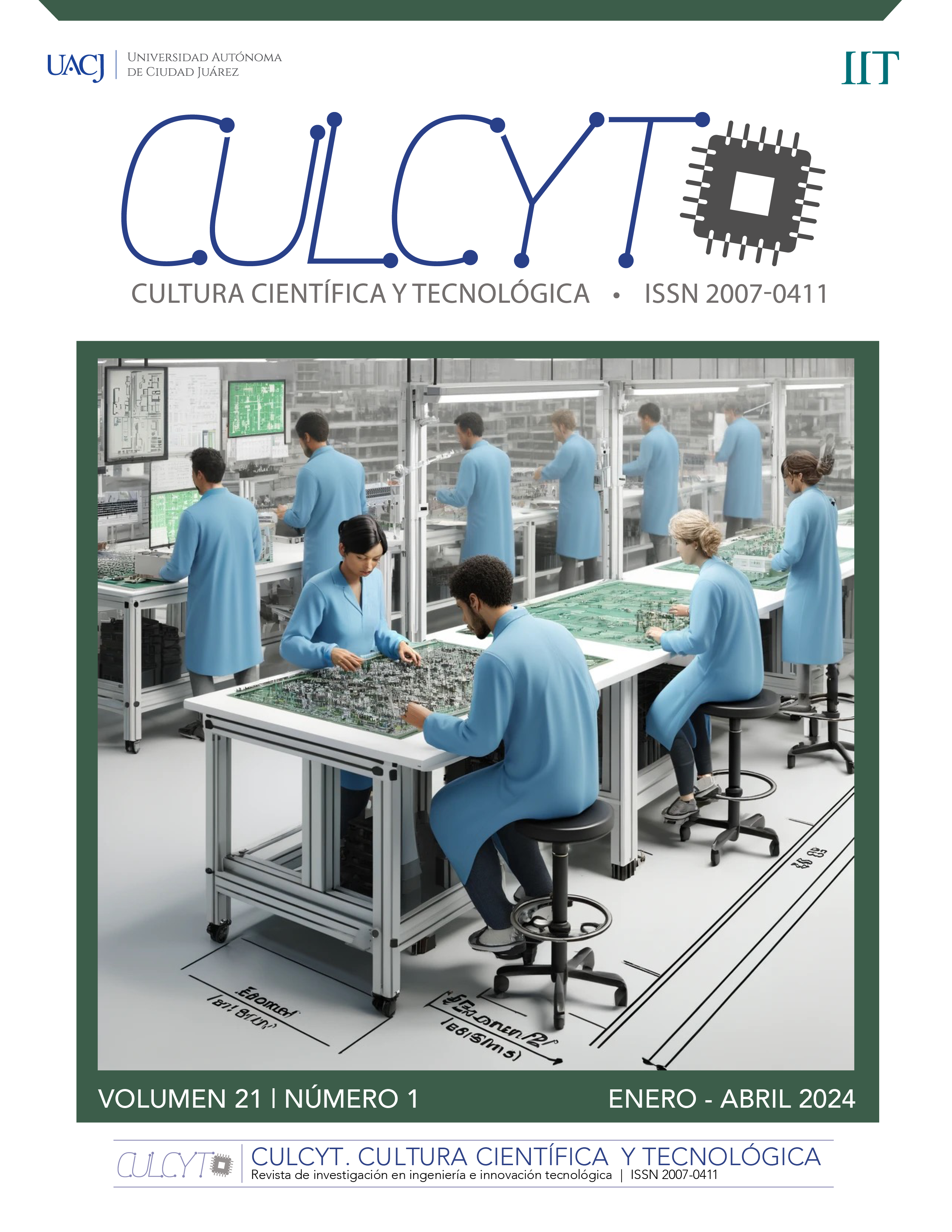Teleworking: College Teachers’ Organization of Time as a Psychosocial Risk
DOI:
https://doi.org/10.20983/culcyt.2024.1.2e.1Keywords:
teletrabajo, riesgo, docentes, COVID-19Abstract
ABSTRACT
Teaching is a demanding profession due to the incorporation of new information and communication technologies in a competitive global market. In addition, during the pandemic, it was transformed into teaching telework. Consequently, teachers have invested and organized their time to develop the required skills, representing a psychosocial risk factor of work. The objectives of the research are to determine the level of psychosocial risk due to the organization of working time in teachers of TecNM Ciudad Juarez and to compare its prevalence by sex, academic degree, and contractual relationship. Reference guide III of NOM-035 was applied in a non-probabilistic sample of 202 teachers, the database was filtered and its prevalence was compared by performing proportional difference tests. As a result, 62% of teachers have high levels of risk. No significant differences were found by sex, but there are significant differences by type of contractual relationship and academic degree. In conclusion, teaching has been significantly affected by the organization of working time and strategies are required to mitigate this psychosocial risk that can affect teachers’ health and the teaching-learning process.
Downloads
References
Eurofound/OIT, “Trabajar en cualquier momento y en cualquier lugar: consecuencias en el ámbito laboral”, Ginebra, Informe conjunto OIT-Eurofound, 2019. [En línea]. Disponible en: https://www.ilo.org/wcmsp5/groups/public/---ed_protect/---protrav/---travail/documents/publication/wcms_712531.pdf
ANUIES, “Anuarios Estadísticos de Educación Superior”. http://www.anuies.mx/informacion-y-servicios/informacion-estadistica-de-educacion-superior/anuario-estadistico-de-educacion-superior (accedido: may. 23, 2023).
Gobierno de México, “Protocolo para prevenir, atender y erradicar el hostigamiento laboral, acoso laboral y maltrato laboral”, 2021. [En línea]. Disponible en: https://www.sep.gob.mx/comunicacioninterna/protocolo_prevenir_acoso_laboral.pdf
T. J. Brito-Cruz, C. C. Lara-Gamboa, D. A. Morales-Diego, M. C. Sánchez-May, A. K. Perez-Jaimes y Á. E. Torres-Zapata, “Aproximación del teletrabajo en el ámbito universitario”, INVURNUS, vol. 16, n.º 1, dic. 2021, doi: 10.46588/invurnus.v16i1.43.
A. Selvaraj, V. Radhin, N. Ka, N. Benson y A. J. Mathew, “Effect of pandemic based online education on teaching and learning system,” Int. J. Educ. Dev., vol. 85, p. 102444, sept. 2021, doi: 10.1016/j.ijedudev.2021.102444.
C. G. Alvites-Huamaní, “Estrés docente y factores psicosociales en docentes de Latinoamérica, Norteamérica y Europa”, Propós. Represent., vol. 7, n.º 3, pp. 141-159, oct. 2019, doi: 10.20511/pyr2019.v7n3.393.
OIT, SOLVE: Integrando la promoción de la salud a las políticas de SST en el lugar de trabajo. Ginebra: Oficina Internacional del Trabajo, 2012. [En línea]. Disponible en: https://docer.com.ar/doc/n08es5e
J. A. Domínguez, “Riesgo psicosocial en la Universidad: estresores propios del docente universitario”, Rev. Digit. Salud Segur. en el Trab., n.º 2, pp. 1-38, 2009.
IBM, “IBM SPSS - Valores perdidos 26”, IBM Corporation, Estados Unidos, 2019. Accedido: feb. 7, 2023. [En línea]. Disponible en: https://www.ibm.com/docs/en/SSLVMB_26.0.0/pdf/es/IBM_SPSS_Missing_Values.pdf
Secretaría del Trabajo y Previsión Social. (2018, nov. 23). Norma Oficial Mexicana NOM-035-STPS-2018, Factores de riesgo psicosocial en el trabajo-Identificación, análisis y prevención. [En línea]. Disponible en: https://dof.gob.mx/nota_detalle.php?codigo=5541828&fecha=23/10/2018#gsc.tab=0
R. A. Chavarría, F. J. Colunga, J. Loría y K. Peláez, “Síndrome de burnout en médicos docentes de un hospital de 2.° nivel en México”, Educ. Médica, vol. 18, n.º 4, pp. 254-261, 2017, doi: 10.1016/j.edumed.2016.09.001.
L. M. Estupiñán, H. V. Guerrero y E. A. Jiménez, “Condiciones de Seguridad y Salud en el Trabajo de los Teletrabajadores: Revisión Sistemática”, Pensam. Am., vol. 12, n.º 23, pp. 94-104, en. 2019, doi: 10.21803/pensam.v12i22.249.
Downloads
Published
How to Cite
Issue
Section
License
Copyright (c) 2024 Dra. Mónica Gabriela Gutiérrez-Hernández, Aidé Aracely Maldonado-Macías, Beatriz Sibaja Terán

This work is licensed under a Creative Commons Attribution-NonCommercial 4.0 International License.
Todos los contenidos de CULCYT se distribuyen bajo una licencia de uso y distribución “Creative Commons Reconocimiento-No Comercial 4.0 Internacional” (CC-BY-NC). Puede consultar desde aquí la versión informativa de la licencia.
Los autores/as que soliciten publicar en esta revista, aceptan los términos siguientes: a) los/las autores/as conservarán sus derechos de autor y garantizarán a la revista el derecho de primera publicación de su obra; y b) se permite y recomienda a los/las autores/as agregar enlaces de sus artículos en CULCYT en la página web de su institución o en la personal, debido a que ello puede generar intercambios interesantes y aumentar las citas de su obra publicada.



